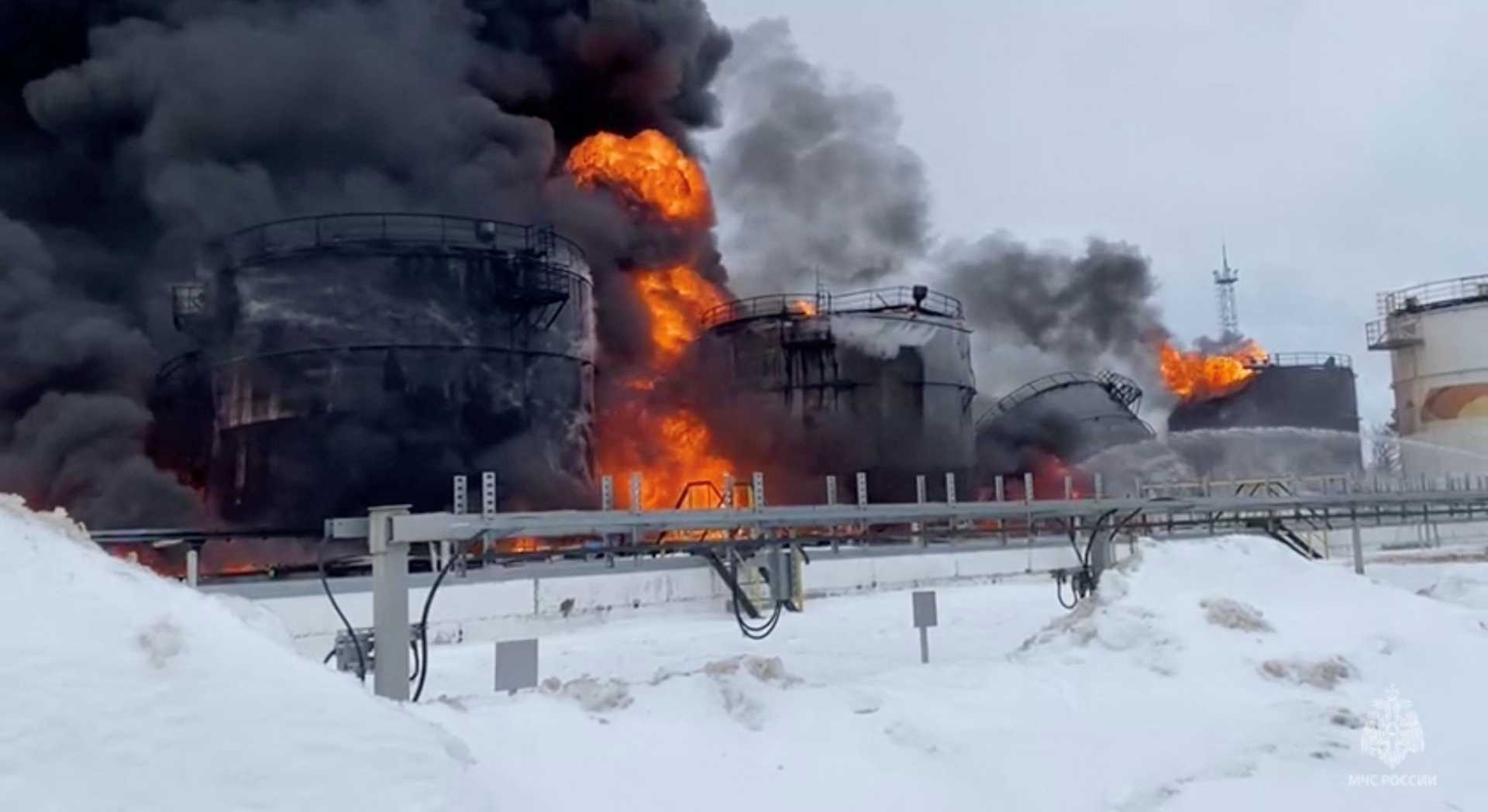World
Ukraine Targets Russian Bomber Infrastructure in Escalating Drone Strikes

SARATOV, Russia — Ukrainian drones have launched a series of deep strikes targeting critical Russian military infrastructure, including fuel depots and aircraft manufacturing facilities, as part of a broader strategy to weaken Russia’s bomber capabilities. The attacks, which began in early January 2025, have focused on key sites such as the Engels bomber base in Saratov and the Kazan Aircraft Plant, a hub for Russian bomber production and maintenance.
On Jan. 8, Ukrainian drones struck a sprawling fuel storage facility near the Engels base, located approximately 400 miles from the Ukrainian border. Six days later, the same depot was hit again, igniting a fire that burned for days. These strikes were followed by an attack on the Kazan Aircraft Plant on Jan. 14, where a fuel depot near the factory was set ablaze. Ukrainian officials celebrated the operation, with the Ukrainian Center for Strategic Communication stating, “Lighting up the night sky in Russia’s Kazan region, burning Russian aircraft manufacturing facilities for the production and repair of the long-range strategic bombers that regularly rain missiles on the people of Ukraine.”
The Kazan strike was part of a coordinated effort that also targeted a helicopter factory in the city and a fuel depot in Bryansk Oblast, just 25 miles from Ukraine. The Ukrainian Center for Strategic Communication vowed, “And there will be more,” signaling an escalation in long-range drone operations.
Ukraine has deployed a variety of long-range unmanned aerial vehicles (UAVs) for these missions, including modified A-22 sport planes and smaller drones like the PD-2, Beaver, Liutyi, and UJ-22. These propeller-driven, GPS-guided UAVs can carry explosive payloads over hundreds of miles, making them ideal for striking deep inside Russian territory.
The focus on fuel depots and industrial sites reflects a strategic shift in Ukraine’s approach. By targeting the infrastructure that supports Russia’s bomber fleet, Ukraine aims to increase the cost and complexity of Russia’s ongoing bombardment of Ukrainian cities. While the bombers themselves—120 Tupolev Tu-22Ms, Tu-95s, and Tu-160s—remain difficult to destroy due to their speed, altitude, and dispersal across multiple bases, their supporting facilities are stationary and vulnerable.
These strikes come amid a broader escalation in the conflict, with both sides exchanging drone and missile attacks. On Jan. 15, Ukraine launched what it described as its “most massive” attack of the war, targeting military and oil facilities deep inside Russia. Meanwhile, Russia has intensified its bombardment of Ukraine’s energy infrastructure, forcing emergency power outages during the winter months.
As the conflict approaches its fourth year, the situation remains volatile. Nikolai Patrushev, an advisor to Russian President Vladimir Putin, warned in a recent interview that Ukraine could cease to exist as a sovereign state by 2025. However, Ukraine’s recent successes in targeting Russian military infrastructure demonstrate its resilience and determination to counter Russian aggression.












